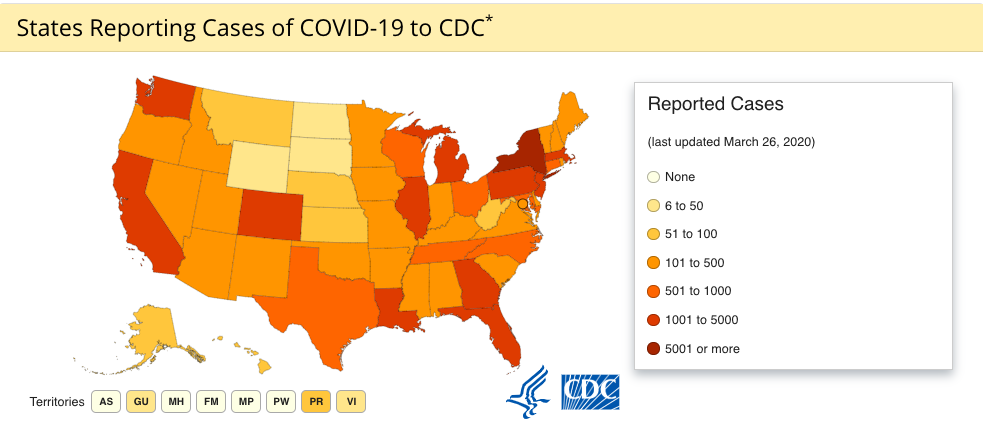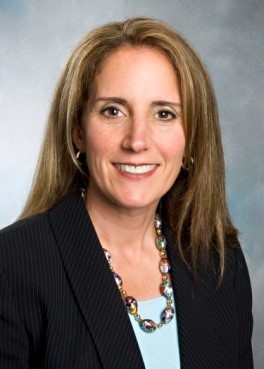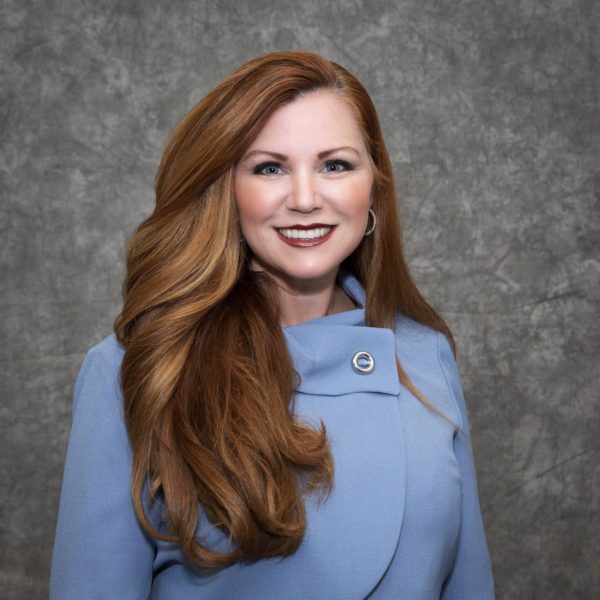
Getty Images/iStockphoto
How Coronavirus Sparked Industry Collaboration, Team-Based Care
As the nation contends with an unprecedented global health crisis, clinicians are meeting the moment with never before seen levels of team-based care and industry collaboration.

Healthcare is facing a never-before-seen global health crisis with the coronavirus outbreak, with infection rates on a meteoric rise. But at the same time, healthcare is seeing something else that’s unprecedented: a massive mobilization toward team-based care and industry collaboration.
Around the globe, the effects of the coronavirus are keenly felt. At the time of publication, some 551,337 people have the disease worldwide, while the death toll comes in at 24,906, per figures from Johns Hopkins University.
Healthcare is facing a never-before-seen global health crisis with the coronavirus outbreak, with infection rates on a meteoric rise. But at the same time, healthcare is seeing something else that’s unprecedented: a massive mobilization toward team-based care and industry collaboration.
Around the globe, the effects of the coronavirus are keenly felt. At the time of publication, some 551,337 people have the disease worldwide, while the death toll comes in at 24,906, per figures from Johns Hopkins University.
But even as the death rate reaches into the hundreds, the US is also seeing people recover. At time of publication, Johns Hopkins can project 753 people have recovered from the disease, and that’s thanks to the tireless efforts of the medical frontline and public health community.
To be clear, healthcare does not yet have this pandemic pinned down, nor does it have an end date in sight. Medical professionals need all the help they can get — access to life-saving ventilators or the personal protective equipment (PPE) that is the first line of defense between a sick patient and a treating clinician.
But those challenges notwithstanding, healthcare has also broken down hurdles that experts have long heralded the biggest challenges in medicine.
Telehealth, for example, is now a dinner table subject, a far cry from the low consumer adoption numbers seen just months before COVID-19. Healthcare has also fast-tracked important provisions, namely interstate licensure, to make sure geography does not impede a patient’s ability to receive remote care.
Interoperability is also advancing, as health data experts chip away at a decades-old technology problem. One Florida-based health information exchange, HIE Networks, has retooled its systems to make it easier for providers to access patient health data regardless of where that patient has previously accessed care.
Notably, these advances have all come to deliver on a singular overarching goal: team-based care. Team-based care has been the ideal in healthcare since the industry began hurdling toward value-based payment models.
Healthcare providers are increasingly getting paid based on the value of care, instead of the volume of services rendered. And because of that, industry leaders identified a need to care for the patient from all angles efficiently, both inside and outside the clinical setting.
In the past, team-based care hasn’t been easy. Medical providers are used to working in siloes, drawing strict boundaries between themselves and other parts of the healthcare practice. Power hierarchies have made collaboration difficult, not to mention the technological limitations that abound.
But our present situation is different. As healthcare stares down a serious global catastrophe, challenges to team-based care are starting to fade.
Heading into unchartered waters

If there is one thing medicine knows to be true about the coronavirus, it’s this: the virus and its exponential spread are entirely unprecedented.
“This is not like anything anybody in healthcare has experienced ever,” said Jessica Dudley, MD, the chief clinical officer at Press Ganey, formerly with Brigham and Women’s Hospital in Boston. “And even when we've had disasters, or a big outbreak of something, it has never been like this.”
Of course, healthcare has contended with big disasters before. The Boston Marathon bombing was a major healthcare emergency for area hospitals back in 2013, Dudley pointed out.
And in 2009, the global health industry contended with the H1N1 strain of influenza, which affected about 60.8 million patients in the US and killed about 12,000, according to the CDC.
“But nothing has been like this. And that's actually really important,” Dudley said. “That means we're all in unchartered waters. The types of things that we know are so critical for communication, teamwork, being able to innovate, problem solve and move forward, are more critical in this moment than they've ever been.”
It’s true, the medical industry does not have experience handling a pandemic of this scale and this duration — how could it? And that, in many ways, is crippling. It seems as though there are more questions than answers right now.
Frontline workers are scrambling to make it work in their clinics and hospitals, facing a frightening shortage of PPE and medical workforce in general.
Public health officials and policymakers face tough questions from a scared constituency, not always knowing where the tides will take us and how long we will fight virus spread.
But in other ways, healthcare’s lack of experience with a widescale pandemic has brought about key opportunities for cross-sector collaboration and clinician teamwork.
Healthcare siloes break down, care teams emerge
The practice of team-based care is not a new concept, even if it is only emerging as a perfected science in this COVID-19 world. Industry leaders have long hailed team-based care as one of the keys to the value-based care puzzle, arguing that it leads to more efficient care, treatment access, and patient satisfaction.
When doctors, nurses, advance practice providers, caseworkers, and others are involved in patient care collaborate, outcomes improve.
But it’s not always that easy.
“Almost everybody is really good at working in a defined team,” Dudley said. The majority are able to say, this is my team. And we can work well as a team. The challenge of that was in a hospital or clinic setting, you can't just be on one team, because there's so much integration that happens.”
Everyone working in an ambulatory clinic might work great together, which Dudley acknowledged is essential to quality patient care.
But that ambulatory clinic team needs to be able to work well with other teams that cut across them, like the social services that help patients get access to healthy food or follow-up with home-based care.
“We've got to engage with those home-based care providers, whether they are part of our health system or organization or not. That is now the new team,” Dudley explained. “That's traditionally where healthcare has holes. When it's not the most clear team that we're on, we're not great at creating, for example, teams of teams.”
But all of that has changed since the coronavirus hit US hospitals and health clinics. Providers and clinical leaders are foremost focused on getting patients better, on testing those who are displaying symptoms, and flattening the curve.
It doesn’t matter if a clinic is a part of a hospital’s health system when a patient displays concerning COVID-19 symptoms. Right now, things are so dire that they are all on the same team against the virus.
“I have been blown away by how people are creating teams of teams,” Dudley said. “This goes to this removing of silos, and recognizing that everybody's on the team, and the team’s going to follow the patient. So when the patient moves from being diagnosed, or coming to be tested, then there's another group that's going to ultimately have to engage and connect with that patient and there has to be something that continues to tie it all together.”
This is of course being made possible by optimized technology. Health information exchanges are making it easier for disparate providers to get access to patient data.
The private sector, too, is driving collaboration. The COVID-19 Health Coalition includes the likes of Epic Systems, the Mayo Clinic, Amazon Web Services (AWS), and numerous other heavy hitters. The group, totaling at 18 private sector leaders and counting, has convened under the promise that members will share best practices for the betterment of US healthcare and that nobody will collect a profit.
This ultimately equips providers with the data necessary to pinpoint key patient demographics, understand risk, and practice with all of the knowledge available.
But the rise in team-based care has also been made possible by the clinicians.
Addressing power hierarchies, establishing clear lines of communication
In the past, teamwork in healthcare has been limited by power hierarchies, or at least by perceived power hierarchies. This is natural; it is difficult for a provider with limited practical experience to feel comfortable correcting a more seasoned clinician, or to even offer up her own opinion.
Concerns about perceived power hierarchies are well-documented. A 2015 study from the University of California in both San Francisco (UCSF) and Davis (UCD) revealed that an interprofessional debrief team comprising both resident trainees and more experienced providers were not always beneficial because of perceived power hierarchies.
The 16 residents included in the study stated that after a simulated pediatric patient encounter, they did not feel like they could offer candid feedback to higher ranking colleagues because they needed to maintain positive professional relationships with their superiors.
Issues with workplace bullying can also put a strain on interprofessional collaboration, studies have shown.
But the outbreak of the coronavirus has leveled the playing field, so to speak. Nobody has experience treating such a massive and catastrophic public health emergency, which means everyone has been able to collaborate, Dudley said.
“Psychological safety is happening now more than we’ve ever seen,” she pointed out. “Part of that is that nobody has ever seen this before, so nobody knows the right way. So that, in some sense, is leveling the playing field. It’s making everybody recognize that they have to step up and share what they’re seeing and learning. I’m seeing this across the country with physicians and nurses.”
Within a single healthcare organization, this means that doctors, nurses, advance practice practitioners, and other key figures on healthcare’s frontline are working together as a team for the betterment of the patient. There are not power hierarchies, just a collective effort to put a cap on the spread of coronavirus.
“We are all in this together. Every employee in the hospital now is a caregiver,” Dudley said. “They always have been, but it’s now very clear that is the case. Everybody has got to be extremely focused on ensuring that the patient is triaged to the appropriate place to minimize the spread of potential infection for everybody.”
Of course, this concept is still posing its challenges, although they aren’t tied as much to the perception of power hierarchies. Instead, healthcare organizations are having trouble ensuring communication is adequate, despite best efforts and intentions.
Daily team huddles, direct messages between providers, and staff emails aren’t effective right now, Dudley suggested, because clinicians are so swamped with work.
“I don’t think we have this figured out yet,” Dudley admitted. “But folks are working really hard to be as thoughtful as possible with what they’re sending out and trying to coordinate and integrate the communication because they know that people can’t check dozens of emails.”
Clinical teams are working to tap alternative communication channels that are easier to engage with, that convey a breadth and depth of information that an email can’t, and that can be widely accessed across a diverse provider group.
“We are figuring out how to consolidate communication into very efficient modes that share what you do know,” Dudley said. “Email is no longer the sole means of communication. As we’ve been talking to folks across the country, many of them are doing virtual web chats or Zoom calls in addition to emails so folks have time to connect and speak and not just push things through email.”
Healthcare is also facing another challenge: not everyone is able to fully participate on the care team, and it’s opened up a long discussion about scope of practice.
Challenges remain tapping all members of the care team
Efforts for team-based care may have ramped up, but the industry is still missing a key part of the picture. Advance practice practitioners, specifically nurse practitioners, say they need to see relaxed scope of practice laws in order to reach their potential supporting the care team.
“Nurse practitioners must have a written collaborative agreement with a physician that just says ‘if anything happens, I will collaborate with physician XYZ,’” explained Sophia Thomas, DNP, FNP, PNP, FAANP, president of the American Association of Nurse Practitioners, which has been outspoken about expanded scope of practice.
“There's no evidence that these agreements are necessary and it's outdated practice law,” Thomas continued. “We're really calling on the governors to provide loosened regulations and update these outdated practice laws to allow nurse practitioners to practice to the full extent of their education and training. This will allow employees to go into other practice areas.”
Currently, 22 states, the District of Columbia, the Department of Veterans Affairs (VA), and the Indian Health Services (IHS), have relaxed scope of practice laws.
In the remaining states with more regulations, Thomas said nurse practitioners are bound to their existing practice area or specialty. This means that, because of her collaborative agreement, she may not be able to help fill in the workforce shortage.
“The reality is NPs collaborate with healthcare providers in many disciplines every day without a written agreement,” Thomas said. “If I didn't have a collaborative practice agreement, I could actually go practice in an ER tomorrow and provide care to a patient, but I have to have this written agreement.”
According to Thomas, it takes the Board of Nursing between one and two months to approve a new collaborative agreement, a timeframe which will be prohibitive for NPs wanting to work in other parts of a hospital or health system to ameliorate the patient access bottleneck.
On March 24, AANP issued that very letter to all 50 state governors urging them to relax scope of practice laws. A day later, HHS Secretary Alex Azar issued a similar letter, receiving applause from AANP. At the time of publication, no states have announced relaxed scope of practice laws, although the March 25 stimulus package does grant NPs and physician assistants authority to order home healthcare services for Medicare patients, consistent with state law.
Gearing up for healthcare’s uphill battle

These advances notwithstanding, the coming months are slated to be difficult for healthcare. Improvements in team-based care are not a fix-all for the coronavirus, but rather a silver lining.
The situation is still pretty dire, both Thomas and Dudley have noted. For one thing, healthcare organizations are desperate for PPE.
“All healthcare providers urgently need personal protective equipment like masks, gowns, and gloves to ensure their safety and that of all the providers treating patients with COVID-19,” Thomas said.
“People are having to resort to less than adequate measures to protect themselves,” she added. “We started this crisis with the requirement of the N 95 mask, and we're now at a point where the CDC has said, you know, if you don't have anything else, you can use bandanas. Well we don't have the evidence to show that bandanas are effective at preventing the spread of disease.”
This not only puts workforce numbers at risk — a sick clinician is not a practicing clinician — but can be completely demoralizing. Limited PPE adds a devastating layer of personal and interpersonal risk for clinicians, who desperately do not want to infect their families or anyone else in their lives.
Social distancing, the main strategy public health officials can tap to try and keep a lid on coronavirus spread, is also posing challenges. Not all patients are heeding expert advice, a major point of concern for medical practitioners.
But with each day the coronavirus story is writing itself, and the medical industry cannot always be sure of the next plot twist. And while there is certainly more to come before the pandemic runs its course, the industry can be certain that teamwork, communication, and unity is going to be present.





